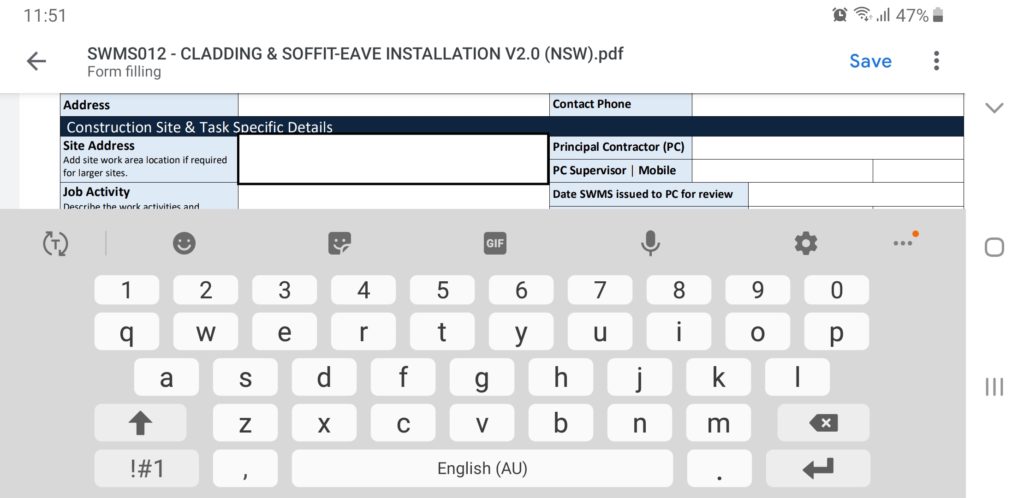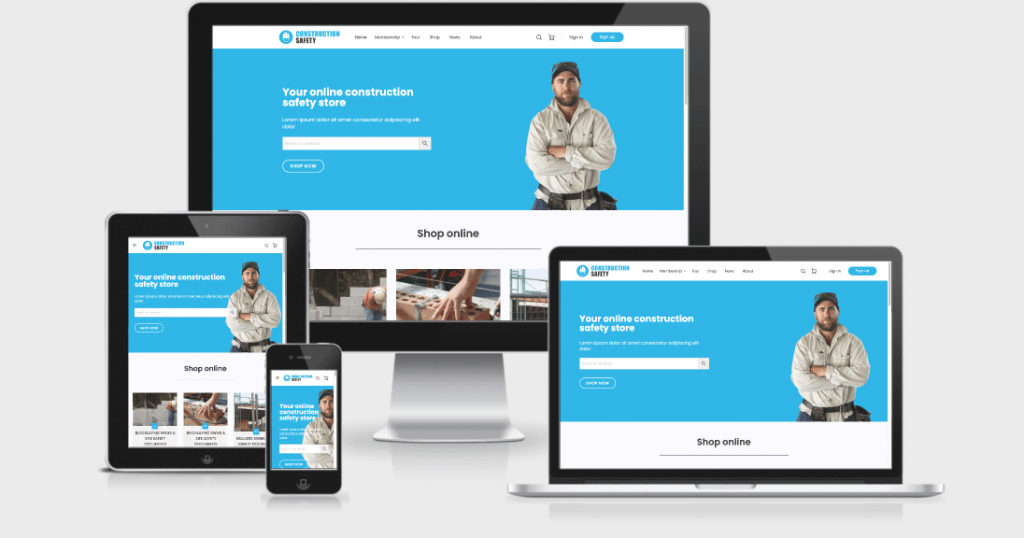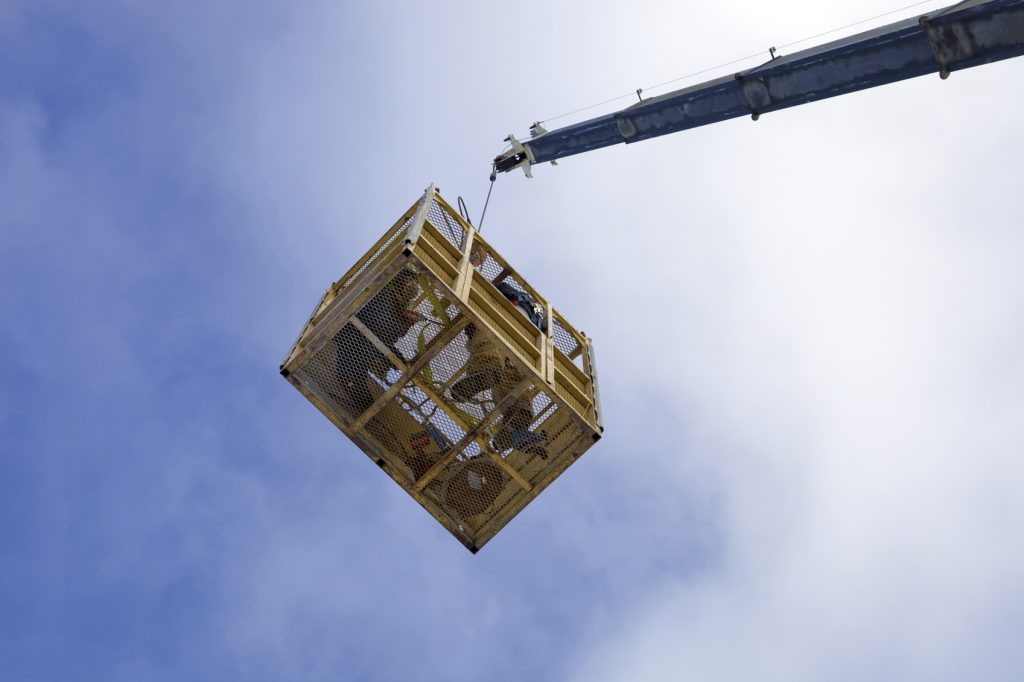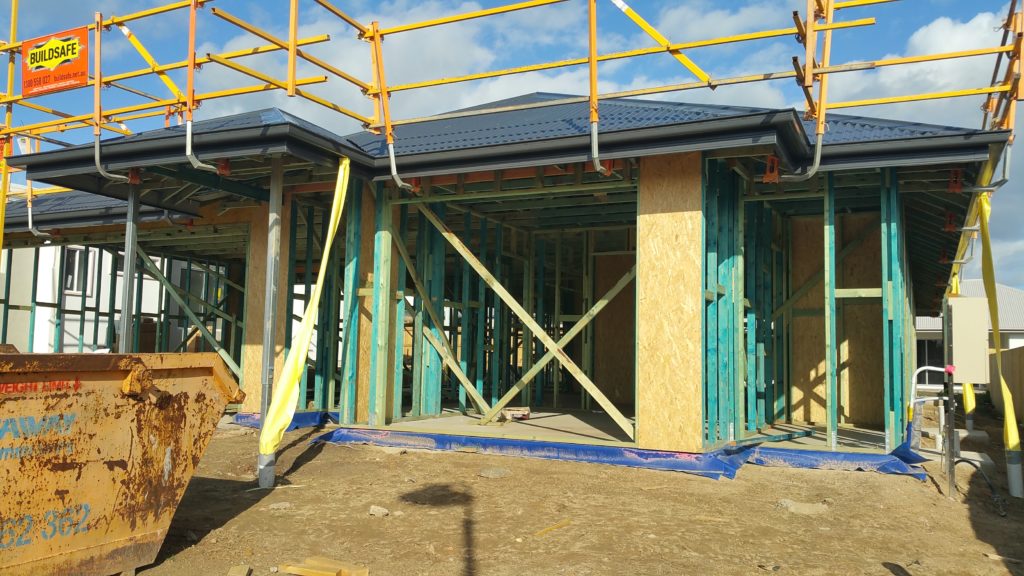What must be included in a SWMS document

There is still a lot of confusion out there about what must be included in a Safe Work Method Statement or SWMS. Many times, subcontractors are left shaking their head in frustration because one construction company approves their SWMS while others don’t. Every company has the right to implement their own policies and procedures based on their interpretation of current legislation, and their site specific requirements. This is why it is so important for you to understand what your SWMS must contain.
Fortunately, current WHS Regulations clearly state what must be included in a SWMS document.
These are the main elements that must be included in every SWMS prepared for high risk construction work. No matter what principal contractor you are working for, you must make sure your SWMS contains the following mandatory items.
A Safe Work Method Statement (SWMS) must:
- Identify the work that is high risk construction work.
- State hazards relating to the high risk construction work and risks to health and safety associated with those hazards.
- Describe the measures to be implemented to control the risks.
- Describe how the control measures are to be implemented, monitored, and reviewed.
What else should I consider when preparing a SWMS?
- When you are preparing a SWMS you should consider the circumstances at the workplace that may impact or affect the way you carry out high risk construction work activities. For example, think about what powered mobile plant, like cranes, forklifts, or excavators are operating on the work site and how close they will be to your work area. If they are working near your work area, then your SWMS will need to contain risk control measures that eliminate or minimise the risk associated with working near powered mobile plant.
- If you are working on a construction site where the principal contractor has a site specific Work Health and Safety Management Plan (WHSMP), you will need to consider the relevant safe work procedures and systems of work contained in that WHSMP when preparing your SWMS. Under current WHS laws, the principal contractor is responsible for maintaining a safe working environment for all subcontractors, workers, and visitors accessing the construction site. This is achieved in most part by reviewing each subcontractor’s SWMS to ensure they align with the site specific requirements, and the WHS Management Plan policies and procedures.
- The SWMS must be written in such a way that all workers can read and understand it.
- The process used to complete all of the work tasks should be written in a step by step order from the first task step to the final task step to complete the job. This is a very important part of preparing a SWMS, because every task has associated hazards that must be identified, and risk controls that must be implemented.
- All workers must be able to access the SWMS at any time so they can read and follow the relevant risk control measures for the task.
- Make sure that the SWMS includes all relevant risk control measures found in current WHS Regulations. For example, when working at height and there is a risk of a person falling more than 2m, WHS Regulation 79 lays out clear requirements to minimise the risk of a person falling.
- The SWMS should state the name of the person who will be supervising the workers to ensure they are complying with the SWMS risk control measures.
- The SWMS must include the procedure used by the supervisor to stop all works when a worker and/or workers are discovered not carrying out their work according to the SWMS risk controls. This procedure should consider if there is a need for the SWMS to be revised if workers find it difficult to understand the risk controls, or perhaps the risk controls are no longer effective.
- Personal protective equipment (PPE) required to protect workers should also be included in the SWMS.
General information required in a SWMS
I have seen many SWMS rejected simply because they do not have the basic information such as business details, persons responsible for health and safety, and site details. Take the time to include the following in your SWMS before submitting them to a Principal Contractor, or starting work on a new site.
- Details of the company or business name (PCBU) carrying out the work, including the ABN.
- Company/business office address.
- Contact person including contact phone number.
- The Principal Contractor name.
- Principal Contractors site manager, and safety officer (if applicable) and phone numbers.
- The construction site address.
- The person who will be responsible for monitoring workers health and safety compliance and reviewing the SWMS when required.
- The date that the SWMS was reviewed and the date it was issued to the site.
While there is no guaranteed method of getting 100% approval for your SWMS on every site, you can improve your approval rating by simply following standard industry procedures and legislative requirements.





Responses